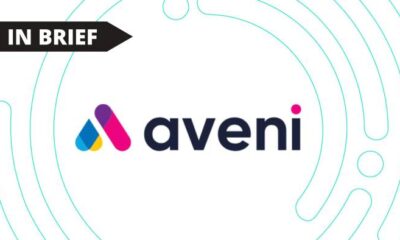Fintech
Lessons New Zealand can learn from Asian fintech platforms

Alipay and WeChat dominate China’s QR code-based digital payments ecosystem. Photo: 123RF
New Zealand fintech experts are advocating greater collaboration with Asia to broaden market reach and spur growth.
Fintech is one of New Zealand’s fastest growing technology sectors.
According to the 2024 TIN NZ Fintech Report, total New Zealand fintech revenues grew from $160 million in 2013 to $2.64 billion in 2023, four times greater growth than the rest of the tech sector combined in the last ten years.
Last year, 84% ($2.2 billion) of New Zealand’s fintech revenue came from overseas, up 28% to a value of $486 million year-on-year.
Growth in 2023 was driven by strong performances in North America (+26%), Europe (+29%) and Australia (+30%).

A customer scans a QR code to buy bananas in China. Photo: provided
New Zealand fintech companies have traditionally focused on expanding into North America, Europe and Australia.
However, financial experts are now urging domestic fintech companies to target the Asian market and strengthen cooperation with Asian partners.
FinTechNZ executive director Jason Roberts believes New Zealand is on the verge of rapid growth in fintech financial innovation, highlighting the importance of strong ties with ASEAN markets.
“At the moment, around 3% of our fintech revenues come from ASEAN, which is very low compared to Australia,” Roberts said.
“Our traditional markets are saturated, quite competitive and we are not expanding or growing,” he said. “If we can get our products right in an Asian market, the possibility for large-scale growth is phenomenal.”
He said countries such as China and India were experiencing incredibly rapid digital changes in business practices, adding that New Zealand should not be left behind in terms of competition and innovation.
PricewaterhouseCoopers’ Navigating the Payments Matrix report showed that the financial services sector is undergoing a significant transformation, with payments becoming increasingly cashless.
Global cashless payment volumes are expected to increase by more than 80% from 2020 to 2025, with the Asia-Pacific region leading the growth.
The volume of cashless transactions in the Asia-Pacific region is expected to grow 109% by 2025.

Swathi Parikh, Partner at PricewaterhouseCoopers New Zealand Photo: Supplied
Swathi Parikh, partner at PricewaterhouseCoopers New Zealand, said Asia’s large population has attracted more investment into the market, thus expanding the entire fintech landscape.
“The entire Asia-Pacific [region] … it has a lot of developing countries,” he says. “There’s a large population which gives dimension to the market [and] this helps attract more investment in these sectors. With the investment, many companies began to innovate. … They have directly elevated old systems to the next generation of mobile payment ecosystems.”
He said urbanization in the Asia-Pacific region and a regulatory system supporting financial inclusion have further strengthened an Asian-backed digital payments ecosystem.
The PricewaterhouseCoopers report also indicated that fast-growing Asian markets are driving new business models and innovation.
In China, Alipay and WeChat Pay (officially known as Weixin Pay) have created a new paradigm around “super apps” as payment platforms.
Weixin Pay, integrated into the WeChat app, allows users to make quick payments via QR codes and Mini Program payments.
Alipay offers equally advanced tools such as “smile-to-pay” functionality or QR code payment solutions, satisfying various digital payment needs and making cash transactions increasingly obsolete.
In China, these apps allow users to pay for food, clothing, transportation, education and entertainment using QR codes.
China boasts a smartphone penetration rate of more than 70%, making mobile payments a common part of daily life in Asia.
However, there is a very different digital environment in New Zealand.
Roberts said New Zealand’s financial infrastructure was built around a well-established Western model, with bank cards generally used to complete most transactions.
“You could use apps like Alipay, eBay or other third-party services that provide financial functionality without necessarily requiring a bank account,” he said.
“[But] it’s very different in New Zealand,” he said. “I think 93 or 94% of New Zealanders have a bank account, and so when you think about older people and younger people, that’s pretty much every single person. [New Zealand] It has a fairly consolidated environment and uses traditional systems.”
Weixin Pay entered the New Zealand market in 2016, while Alipay began offering cross-border payment services for Chinese tourists in 2013 before officially launching in New Zealand in 2016.
However, the main users of such platforms in New Zealand remain Chinese tourists and international students.
Shu Mei, strategic communications manager for Alipay Outbound Business at Ant International, said Chinese students and tourists visiting New Zealand could access QR code payment services and Mini Program online services.
However, these services were not yet available to most New Zealanders.

FinTechNZ executive director Jason Roberts Photo: Supplied
Roberts said while Alipay and WeChat Pay have established a strong foothold in the Asian community, they have yet to be widely adopted by other New Zealanders.
“Alipay and WeChat have very strong verticals in particular sectors of the Asian community because they are used to sending money back and forth, but it hasn’t been universally adopted,” Roberts said. “Banks and other providers here (in New Zealand) don’t use the same technologies to the level they do overseas.”
Mei said Alipay has partnered with the Bank of New Zealand, allowing the bank to offer Alipay as a payment option to local businesses.
“Cooperation with major local banks will definitely require time and effort,” Mei said. “But partnering with BNZ means we are recognized and accepted by the local system, and this close collaboration has entered a new phase.”
Monica Zheng, managing director of Weixin Pay Oceania, said major New Zealand merchants, including The Warehouse Group, Pak ‘N Save, duty-free and travel retailers Lagardère and DFS, and shopping centers such as Farmers and Smith & Caughey’s have adopted Weixin Pay.
“Quick Pay (scanned by merchants) and QR Code Payment, which includes dynamic and static QR codes, are collectively referred to by industry partners as scan to pay,” Zheng said.
“This method has become very popular in the New Zealand market,” he said.
“Major payment institutions and POS providers such as Windcave, Verifone and Adyen have integrated support for this mode into their devices. It is widely used by both large enterprises and small to medium-sized merchants across various industries.”

Weixin Pay, integrated into the WeChat app, allows users to make a payment via a QR code. Photo: provided
Zheng said Weixin Pay will continue to explore collaborations with New Zealand technology companies.
Parikh predicted significant growth for New Zealand fintechs once open banking APIs and consumer data rights regulations are implemented.
Roberts agrees, pointing out that New Zealand’s slow adoption of consumer rights legislation has hindered investment and innovation by banks and service providers.
“We are seeing new rules and regulations introduced or planned,” Roberts said. “You will then see innovations and new products, which could include the expansion of incoming international competitors such as Alipay, WeChat and others.”
Parikh said QR code payments, widely used by Alipay and Weixin Pay, could potentially gain popularity in New Zealand.
“We all used the COVID Tracer app, right?” she said. “People know how to pick up the phone, scan… so we’ve already trained people… Once merchants know this, and more merchants start using QR codes, it will become more widespread .
“The prevalence of digital payments will continue to increase [in New Zealand]” he said. “There will be a shift towards digital payments, QR codes and mobile payments. There will be a lot of integration between your payments and other platforms.
“But this also means that we need to place more emphasis on security, fraud prevention and data privacy. The bottom line is that our regulatory developments will need to keep pace with these evolving scenarios.”
When asked about the platforms’ security processes, Zheng said that user security and data privacy are top priorities for Weixin Pay.
Weixin Pay has prohibited any criminal behavior and has dedicated significant resources to combating online scams through technology, fraud risk prevention and reporting tools.
Citing company policy, an Alipay spokesperson said the platform strictly safeguards user privacy by adhering to relevant Chinese regulations.
Alipay’s policy also ensures that it will not share users’ personal and banking information with third parties in any form, the spokesperson said.
Fintech
US Agencies Request Information on Bank-Fintech Dealings

Federal banking regulators have issued a statement reminding banks of the potential risks associated with third-party arrangements to provide bank deposit products and services.
The agencies support responsible innovation and banks that engage in these arrangements in a safe and fair manner and in compliance with applicable law. While these arrangements may offer benefits, supervisory experience has identified a number of safety and soundness, compliance, and consumer concerns with the management of these arrangements. The statement details potential risks and provides examples of effective risk management practices for these arrangements. Additionally, the statement reminds banks of existing legal requirements, guidance, and related resources and provides insights that the agencies have gained through their oversight. The statement does not establish new supervisory expectations.
Separately, the agencies requested additional information on a broad range of arrangements between banks and fintechs, including for deposit, payment, and lending products and services. The agencies are seeking input on the nature and implications of arrangements between banks and fintechs and effective risk management practices.
The agencies are considering whether to take additional steps to ensure that banks effectively manage the risks associated with these different types of arrangements.
SUBSCRIBE TO THE NEWSLETTER
And get exclusive articles on the stock markets
Fintech
What changes in financial regulation have impacted the development of financial technology?

Exploring the complex landscape of global financial regulation, we gather insights from leading fintech leaders, including CEOs and finance experts. From the game-changing impact of PSD2 to the significant role of GDPR in data security, explore the four key regulatory changes that have reshaped fintech development, answering the question: “What changes in financial regulation have impacted fintech development?”
- PSD2 revolutionizes access to financial technology
- GDPR Improves Fintech Data Privacy
- Regulatory Sandboxes Drive Fintech Innovation
- GDPR Impacts Fintech Data Security
PSD2 revolutionizes access to financial technology
When it comes to regulatory impact on fintech development, nothing comes close to PSD2. This EU regulation has created a new level playing field for market players of all sizes, from fintech startups to established banks. It has had a ripple effect on other markets around the world, inspiring similar regulatory frameworks and driving global innovation in fintech.
The Payment Services Directive (PSD2), the EU law in force since 2018, has revolutionized the fintech industry by requiring banks to provide third-party payment providers (TPPs) with access to payment services and customer account information via open APIs. This has democratized access to financial data, fostering the development of personalized financial instruments and seamless payment solutions. Advanced security measures such as Strong Customer Authentication (SCA) have increased consumer trust, pushing both fintech companies and traditional banks to innovate and collaborate more effectively, resulting in a dynamic and consumer-friendly financial ecosystem.
The impact of PSD2 has extended beyond the EU, inspiring similar regulations around the world. Countries such as the UK, Australia and Canada have launched their own open banking initiatives, spurred by the benefits seen in the EU. PSD2 has highlighted the benefits of open banking, also prompting US financial institutions and fintech companies to explore similar initiatives voluntarily.
This has led to a global wave of fintech innovation, with financial institutions and fintech companies offering more integrated, personalized and secure services. The EU’s leadership in open banking through PSD2 has set a global standard, promoting regulatory harmonization and fostering an interconnected and innovative global financial ecosystem.
Looking ahead, the EU’s PSD3 proposals and Financial Data Access (FIDA) regulations promise to further advance open banking. PSD3 aims to refine and build on PSD2, with a focus on improving transaction security, fraud prevention, and integration between banks and TPPs. FIDA will expand data sharing beyond payment accounts to include areas such as insurance and investments, paving the way for more comprehensive financial products and services.
These developments are set to further enhance connectivity, efficiency and innovation in financial services, cementing open banking as a key component of the global financial infrastructure.
General Manager, Technology and Product Consultant Fintech, Insurtech, Miquido
GDPR Improves Fintech Data Privacy
Privacy and data protection have been taken to another level by the General Data Protection Regulation (GDPR), forcing fintech companies to tighten their data management. In compliance with the GDPR, organizations must ensure that personal data is processed fairly, transparently, and securely.
This has led to increased innovation in fintech towards technologies such as encryption and anonymization for data protection. GDPR was described as a top priority in the data protection strategies of 92% of US-based companies surveyed by PwC.
Financial Expert, Sterlinx Global
Regulatory Sandboxes Drive Fintech Innovation
Since the UK’s Financial Conduct Authority (FCA) pioneered sandbox regulatory frameworks in 2016 to enable fintech startups to explore new products and services, similar frameworks have been introduced in other countries.
This has reduced the “crippling effect on innovation” caused by a “one size fits all” regulatory approach, which would also require machines to be built to complete regulatory compliance before any testing. Successful applications within sandboxes give regulators the confidence to move forward and address gaps in laws, regulations, or supervisory approaches. This has led to widespread adoption of new technologies and business models and helped channel private sector dynamism, while keeping consumers protected and imposing appropriate regulatory requirements.
Co-founder, UK Linkology
GDPR Impacts Fintech Data Security
A big change in financial regulations that has had a real impact on fintech is the 2018 EU General Data Protection Regulation (GDPR). I have seen how GDPR has pushed us to focus more on user privacy and data security.
GDPR means we have to handle personal data much more carefully. At Leverage, we have had to step up our game to meet these new rules. We have improved our data encryption and started doing regular security audits. It was a little tricky at first, but it has made our systems much more secure.
For example, we’ve added features that give users more control over their data, like simple consent tools and clear privacy notices. These changes have helped us comply with GDPR and made our customers feel more confident in how we handle their information.
I believe that GDPR has made fintech companies, including us at Leverage, more transparent and secure. It has helped build trust with our users, showing them that we take data protection seriously.
CEO & Co-Founder, Leverage Planning
Related Articles
Fintech
M2P Fintech About to Raise $80M

Application Programming Interface (API) Infrastructure Platform M2P Financial Technology has reached the final round to raise $80 million, at a valuation of $900 million.
Specifically, M2P Fintech, formerly known as Yap, is closing a new funding round involving new and existing investors, according to entrackr.com. The India-based company, which last raised funding two and a half years ago, previously secured $56 million in a round led by Insight Partners, earning a post-money valuation of $650 million.
A source indicated that M2P Fintech is ready to raise $80 million in this new funding round, led by a new investor. Existing backers, including Insight Partners, are also expected to participate. The new funding is expected to go toward enhancing the company’s technology infrastructure and driving growth in domestic and international markets.
What does M2P Fintech do?
M2P Fintech’s API platform enables businesses to provide branded financial services through partnerships with fintech companies while maintaining regulatory compliance. In addition to its operations in India, the company is active in Nepal, UAE, Australia, New Zealand, Philippines, Bahrain, Egypt, and many other countries.
Another source revealed that M2P Fintech’s valuation in this funding round is expected to be between USD 880 million and USD 900 million (post-money). The company has reportedly received a term sheet and the deal is expected to be publicly announced soon. The Tiger Global-backed company has acquired six companies to date, including Goals101, Syntizen, and BSG ITSOFT, to enhance its service offerings.
According to TheKredible, Beenext is the company’s largest shareholder with over 13% ownership, while the co-founders collectively own 34% of the company. Although M2P Fintech has yet to release its FY24 financials, it has reported a significant increase in operating revenue. However, this growth has also been accompanied by a substantial increase in losses.
Fintech
Scottish financial technology firm Aveni secures £11m to expand AI offering

By Gloria Methri
Today
- To come
- Aveni Assistance
- Aveni Detection
Artificial intelligence Financial Technology Aveni has announced one of the largest Series A investments in a Scottish company this year, amounting to £11 million. The investment is led by Puma Private Equity with participation from Par Equity, Lloyds Banking Group and Nationwide.
Aveni combines AI expertise with extensive financial services experience to create large language models (LLMs) and AI products designed specifically for the financial services industry. It is trusted by some of the UK’s leading financial services firms. It has seen significant business growth over the past two years through its conformity and productivity solutions, Aveni Detect and Aveni Assist.
This investment will enable Aveni to build on the success of its existing products, further consolidate its presence in the sector and introduce advanced technologies through FinLLM, a large-scale language model specifically for financial services.
FinLLM is being developed in partnership with new investors Lloyds Banking Group and Nationwide. It is a large, industry-aligned language model that aims to set the standard for transparent, responsible and ethical adoption of generative AI in UK financial services.
Following the investment, the team developing the FinLLM will be based at the Edinburgh Futures Institute, in a state-of-the-art facility.
Joseph Twigg, CEO of Aveniexplained, “The financial services industry doesn’t need AI models that can quote Shakespeare; it needs AI models that deliver transparency, trust, and most importantly, fairness. The way to achieve this is to develop small, highly tuned language models, trained on financial services data, and reviewed by financial services experts for specific financial services use cases. Generative AI is the most significant technological evolution of our generation, and we are in the early stages of adoption. This represents a significant opportunity for Aveni and our partners. The goal with FinLLM is to set a new standard for the controlled, responsible, and ethical adoption of generative AI, outperforming all other generic models in our select financial services use cases.”
Previous Article
Network International and Biz2X Sign Partnership for SME Financing
IBSi Daily News Analysis

SMBs Leverage Cloud to Gain Competitive Advantage, Study Shows
IBSi FinTech Magazine

- The Most Trusted FinTech Magazine Since 1991
- Digital monthly issue
- Over 60 pages of research, analysis, interviews, opinions and rankings
- Global coverage
subscribe now
-

 DeFi12 months ago
DeFi12 months agoDeFi Technologies Appoints Andrew Forson to Board of Directors
-

 Fintech12 months ago
Fintech12 months agoUS Agencies Request Information on Bank-Fintech Dealings
-

 News1 year ago
News1 year agoBlock Investors Need More to Assess Crypto Unit’s Earnings Potential, Analysts Say — TradingView News
-

 DeFi12 months ago
DeFi12 months agoSwitchboard Revolutionizes DeFi with New Oracle Aggregator
-

 DeFi12 months ago
DeFi12 months agoIs Zypto Wallet a Reliable Choice for DeFi Users?
-

 News1 year ago
News1 year agoBitcoin and Technology Correlation Collapses Due to Excess Supply
-

 Fintech12 months ago
Fintech12 months agoWhat changes in financial regulation have impacted the development of financial technology?
-

 Fintech12 months ago
Fintech12 months agoScottish financial technology firm Aveni secures £11m to expand AI offering
-

 Fintech12 months ago
Fintech12 months agoScottish financial technology firm Aveni raises £11m to develop custom AI model for financial services
-

 News1 year ago
News1 year agoValueZone launches new tools to maximize earnings during the ongoing crypto summer
-

 Videos6 months ago
Videos6 months ago“Artificial intelligence is bringing us to a future that we may not survive” – Sco to Whitney Webb’s Waorting!
-

 DeFi1 year ago
DeFi1 year agoTON Network Surpasses $200M TVL, Boosted by Open League and DeFi Growth ⋆ ZyCrypto














